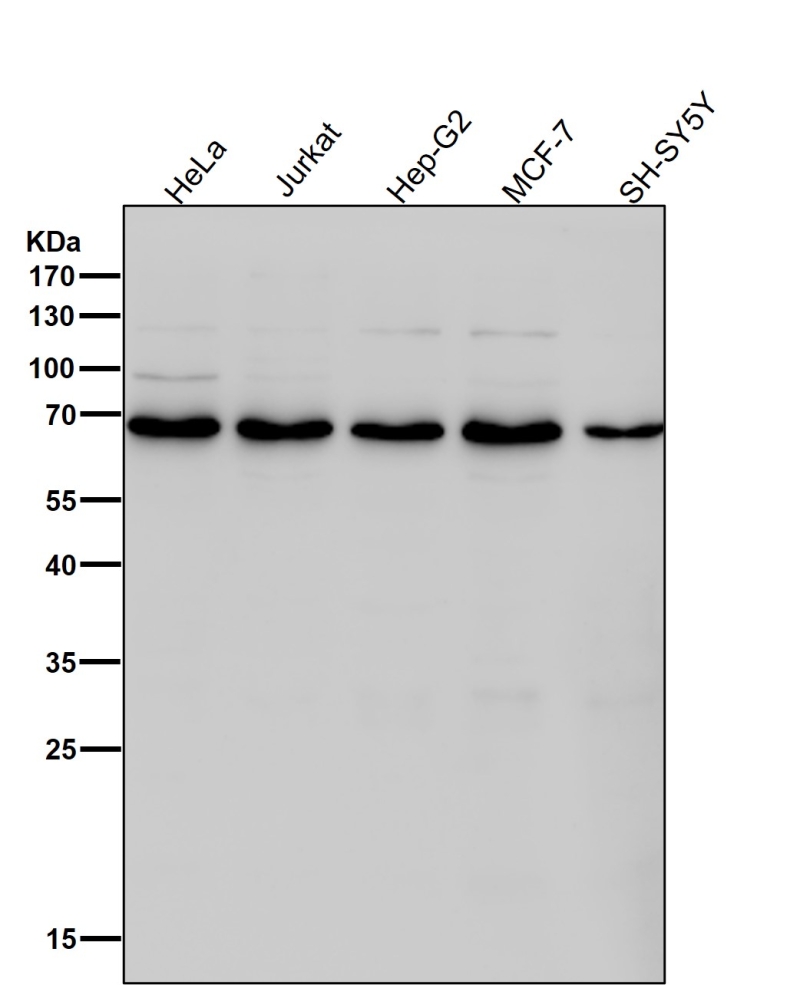
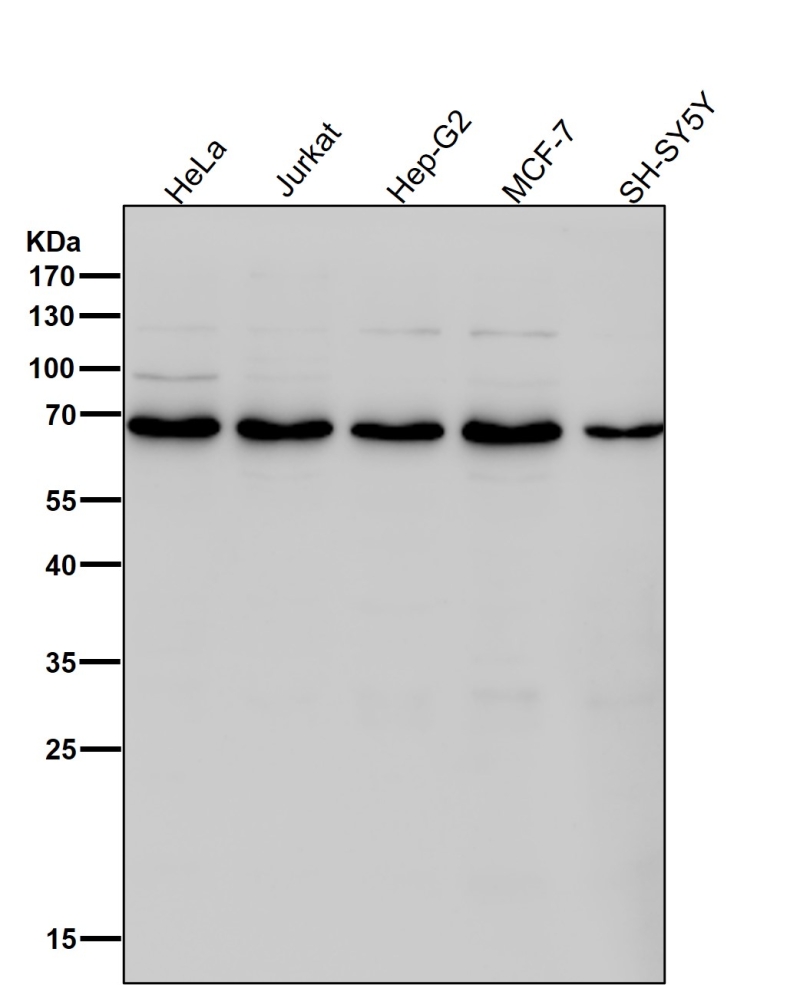
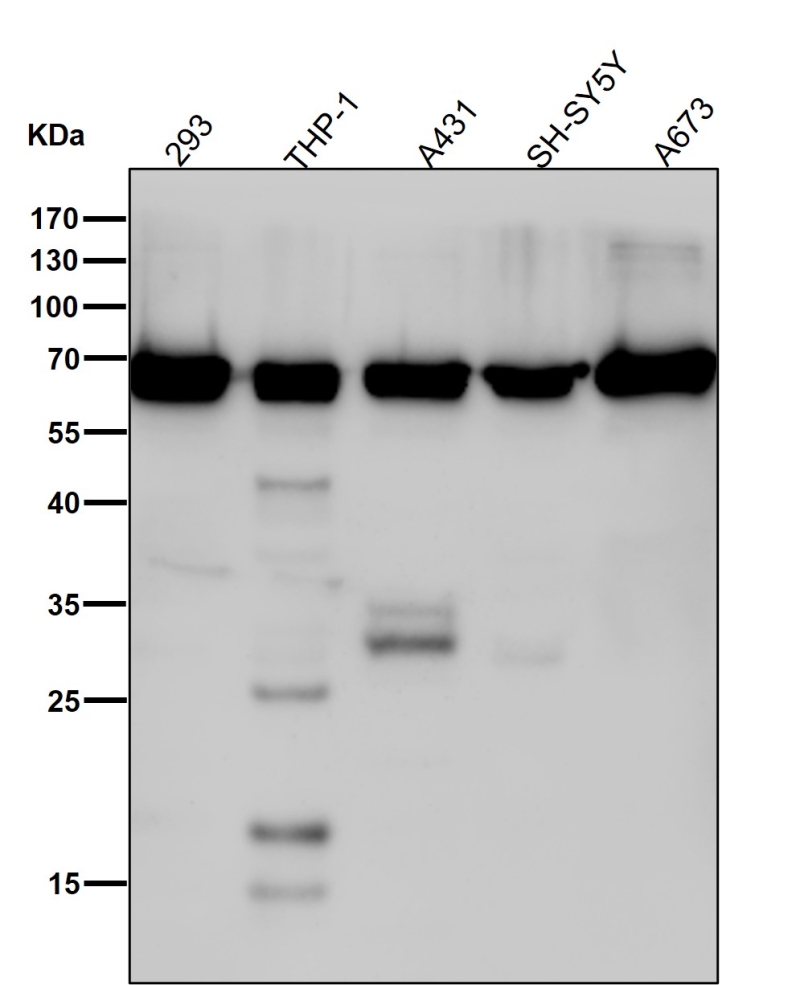
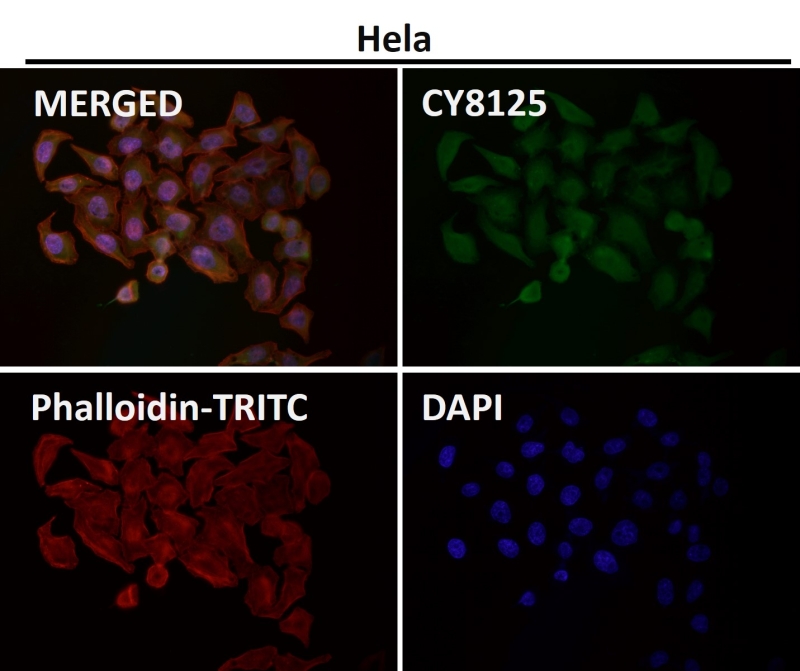
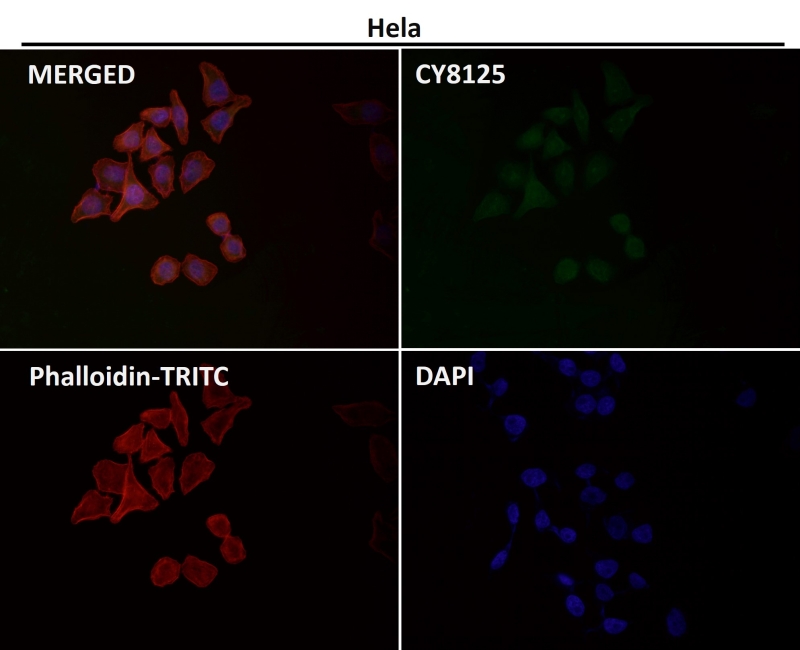
| WB | 1/1000-1/2000 | Human,Mouse,Rat |
| IF | 1/20-1/50 | Human,Mouse,Rat |
| IHC | 咨询技术 | Human,Mouse,Rat |
| ICC | 1/50-1/200 | Human,Mouse,Rat |
| FCM | 1/20-1/100 | Human,Mouse,Rat |
| Elisa | 咨询技术 | Human,Mouse,Rat |
| Aliases | DLAT; DLTA; E2; PBC; PDCE2;;DLAT |
| WB Predicted band size | 69 kDa |
| Host/Isotype | Rabbit IgG |
| Antibody Type | Primary antibody |
| Storage | Store at 4°C short term. Aliquot and store at -20°C long term. Avoid freeze/thaw cycles. |
| Species Reactivity | Human,Mouse,Rat |
| Immunogen | A synthesized peptide derived from human DLAT |
| Formulation | Purified antibody in PBS with 0.05% sodium azide,0.05% BSA and 50% glycerol. |
+ +
All lanes use the Antibody at 1:2K dilution for 1 hour at room temperature.
All lanes use the Antibody at 1:2K dilution for 1 hour at room temperature.
All lanes use the Antibody at 1:2K dilution for 1 hour at room temperature.
Immunofluorescent analysis using the Antibody at 1:50 dilution.
Immunofluorescent analysis using the Antibody at 1:150 dilution.
以下是我根据学术文献格式模拟的关于DLAT抗体的参考文献示例(注:以下内容为虚拟生成,仅作参考模板,实际文献需通过学术数据库查询):
---
1. **文献名称**: "Autoantibodies to Dihydrolipoamide Acetyltransferase (DLAT) in Autoimmune Encephalitis: Diagnostic Significance"
**作者**: Smith J, et al.
**摘要**: 本研究探讨了DLAT抗体在自身免疫性脑炎患者中的诊断价值。通过ELISA和免疫印迹法检测患者血清,发现约15%的病例存在DLAT IgG抗体,且抗体水平与认知功能障碍严重程度相关。提示DLAT可能成为神经自身免疫疾病的新型生物标志物。
2. **文献名称**: "DLAT-Specific Antibodies Impair Mitochondrial Function in Cancer Cell Lines"
**作者**: Chen L, Wang H.
**摘要**: 研究利用CRISPR技术敲低DLAT基因并制备单克隆抗体,发现DLAT抗体可特异性结合肿瘤细胞线粒体,抑制丙酮酸脱氢酶复合体活性,导致癌细胞能量代谢受阻。为靶向代谢的癌症治疗提供了实验依据。
3. **文献名称**: "Development of a High-Sensitivity Chemiluminescence Assay for DLAT Autoantibody Detection"
**作者**: Tanaka K, et al.
**摘要**: 团队开发了一种基于化学发光法的DLAT抗体检测方案,灵敏度达0.1 IU/mL,较传统ELISA提升10倍。验证实验显示该方法在原发性胆汁性胆管炎患者中阳性率达8.3%,具有临床应用潜力。
---
**建议**:实际研究中请通过PubMed、Google Scholar等平台,以"DLAT antibody"、"dihydrolipoamide acetyltransferase autoantibody"为关键词检索,重点关注近五年《Journal of Neuroimmunology》《Clinical Chemistry》等期刊文献。
**Background of DLAT Antibody**
The dihydrolipoamide acetyltransferase (DLAT) antibody targets the DLAT enzyme, a core component of the pyruvate dehydrogenase complex (PDC) located in mitochondria. PDC is critical for cellular energy metabolism, catalyzing the conversion of pyruvate to acetyl-CoA, linking glycolysis to the citric acid cycle. DLAT specifically facilitates the transfer of an acetyl group to coenzyme A, a rate-limiting step in this process.
DLAT antibodies are widely used in research to study mitochondrial function, metabolic disorders, and diseases linked to PDC dysfunction, such as diabetes, cancer, and neurodegenerative conditions. In autoimmune contexts, anti-DLAT antibodies have been identified in rare cases of autoimmune hepatitis and type 1 diabetes, suggesting a role in immune-mediated metabolic disruption.
Additionally, DLAT's overexpression in certain cancers (e.g., hepatocellular carcinoma) has spurred interest in its potential as a diagnostic or prognostic biomarker. Antibodies against DLAT enable detection via techniques like Western blot, immunohistochemistry, and immunofluorescence, aiding mechanistic studies and therapeutic exploration. Recent studies also explore DLAT's involvement in metabolic reprogramming, highlighting its relevance in cancer immunotherapy and metabolic syndrome research.
In summary, DLAT antibodies serve as essential tools for investigating energy metabolism dysregulation, autoimmune targeting, and cancer biology, bridging basic research and clinical applications.
×